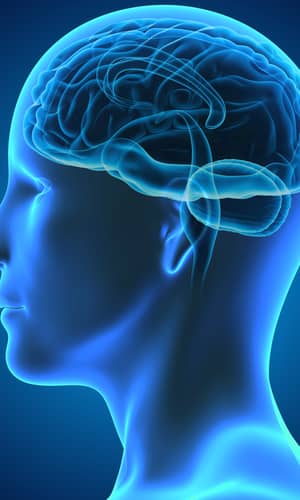The views expressed in this paper are those of the writer(s) and are not necessarily those of the ARJ Editor or Answers in Genesis.
Abstract
To depart from Scripture at any point is neither safe nor right. Thus Estabrook’s discussion of my paper (Joubert 2011) in which he expressed his difficulties with my defense of the soul is welcome.
Introduction
To depart from Scripture at any point is neither safe nor right. Thus Estabrook’s discussion of my paper (Joubert 2011) in which he expressed his difficulties with my defense of the soul is welcome (Estabrook 2012). Estabrook first highlights what he considers to be unsound implications of my definition of the soul. He then criticizes my interpretation of the texts used to demonstrate souls are alive after death. Estabrook’s main contentions are two-fold:
- the biblical promise of resurrection implies that souls are not alive after death; they are asleep, meaning a state of unawareness (Estabrook 2012, pp. 73, 75, 79), and
- the body and soul make up a whole person, which entails that a soul is unable to interact with other things (physical or spiritual) without a body/brain (pp. 73, 74, 77). A series of questions are posed to deal with the contentions.
What Does Scripture Mean By “Soul” and “Spirit”?
With regard to God’s revelation about us in
Scripture, we should not think that what Genesis 1–3
or the Old Testament reveals about us is all there is
we can know about ourselves. The Christian’s task
is to track the unfolding of God’s truth as revealed
in the whole of Scripture. “All Scripture is given by
inspiration of God, . . .
” (2 Timothy 3:16) and therefore
not some of Scripture. Genesis 2:7 records the creation
of Adam as follows: “And the Lord God formed man of
the dust of the ground, and breathed into his nostrils
the breath of life; and man became a living being
[creature; soul].
” The text brings several things to
our attention:
- No human being is a self-caused being (cf. Psalm 100:3).
- The created being is a holistic unity, consisting of both a material and an immaterial part.
- Prior to breathing, the body, including the heart, brain, and other organs, were inactive.
- With the inbreathing of the breath (Hebrew:
ruach, spirit/wind) of life into the human body, the
creature became a living soul, a unified centre of
conscious thought, desires, emotions, volition and
able to act in the world. The spirit is therefore the
principle of physical (biological) life as well as the
immaterial ground of consciousness and personal
identity. Nothing about the text suggests that the
spirit “emerged” by way of a natural process from
the inactive material body. Zechariah 12:1 also
states that it is the Creator who “
. . . forms the spirit within him
[that is, man].”
The above construal usually gives rise to serious
debate, for although “spirit” has been equated with
the meaning of “breath of life
” (Genesis 2:7), the
question is whether “spirit” is in any way different
from the “soul.”
Four things can be said about the soul that is also true of the spirit and vice versa. First, Scripture talks of the “soul and body” interchangeably with “spirit and body.” Not only can God kill the body and the soul (Matthew 10:28), but it is also the case that the body apart from the spirit is dead (James 2:26; nowhere in Scripture is that order ever put in reversed form), and Christians are to be holy in body and spirit (1 Corinthians 7:34; 2 Corinthians 7:1). Just as the soul stands in need of purification from sin (1 Peter 1:22), so does the spirit (2 Corinthians 7:1), for example, being in rebellion or unfaithful toward God (Psalm 78), because of pride (Proverbs 16:18, 32; Ecclesiastes 7:8) and impure motives and mistaken beliefs about spiritual knowledge or understanding (Isaiah 29:24). Second, at death, either the “soul” or the “spirit” departs. Rachel’s soul departed (Genesis 35:18) and the rich fool’s soul was required (Luke 12:20); Elijah prayed that the dead child’s life (breath/spirit) returns to his body (1 Kings 17:17, 21) and David committed his spirit to the Lord (Psalm 31:5; cf. Jesus in Luke 23:46 and John 19:30, and Stephen in Acts 7:59). Third, a person can be troubled either in “soul” or in “spirit.” Jesus, for example, was troubled in his soul (John 12:27; cf. Isaiah 53:11) as well as troubled in his spirit (John 13:21). And fourth, a person worships God either with the “soul” or the “spirit”. David’s soul rejoiced in the Lord (Psalm 25:1, 62:1, 103:1) and Mary’s soul made the Lord great (Luke 1:46); Paul prayed with his spirit (1 Corinthians 14:14–15) and Mary’s spirit worshipped the Lord (Luke 1:47)—note that this is an example of Hebrew parallelism, a poetic device in which the same idea is repeated using different but synonymous words. Let us now take a closer look at how soul and spirit appears in the Old and New Testaments respectively with the help of J. P. Moreland and Scott Rae (2000, pp. 27–40).1
The Hebrew word nephesh, translated as “soul,” appears 754 times in the Old Testament in contrast to the 361 times ruach (spirit)—59 times in reference to humans. “Soul” is used of human beings, animals (Genesis 1:30; 9:10) and God himself (Judges 10:16; Jeremiah 12:7). When used of God it cannot mean physical/biological life or breath, but rather God as an immaterial self, a seat of mind (Jeremiah 4:28), heart/emotion (Genesis 6:6–7; Isaiah 1:11; cf. Jeremiah 4:28), thought (Isaiah 55:8), will (Amos 6:8) and desire (Job 23:13; Isaiah 55:11). It is also the case that the Old Testament makes more use of the word soul than spirit and that soul is more characteristic of the Gospels than the use of spirit by Paul in the New Testament.
When used to refer to human beings, soul takes on several meanings, but the overwhelming emphasis is on the functional, holistic unity of soul and body. Some of the references to the soul are by way of a part of the body, for example, the feet (Psalm 105:17–18), neck (Exodus 33:5; Deuteronomy 28:48) or ear (Jeremiah 19:3). Sometimes they refer to life itself (Leviticus 17:11; Isaiah 55:3), as a vital principle that makes something alive (Psalm 33:3; Proverbs 3:22) and at times as the seat of the mind (Deuteronomy 6:5), emotion (Deuteronomy 21:14), will (Isaiah 42:24; Isaiah 66:4), moral attitudes (Isaiah 42:24, 66:3) and a desire or longing for God (Proverbs 21:10; Isaiah 26:9; Micah 7:1). Finally, there is reference to the soul as the locus of personal identity, especially as far as it pertains to the afterlife (1 Samuel 28:6–18; 1 Kings 17:17–23; cf. Matthew 17:3). The latter set of texts, together with Genesis 35:18 clearly imply that nephesh is (1) a principle of life, (2) an immaterial ground of consciousness and (3) as more than physical or bodily life.
This seems to correspond with the following: while people are frequently told to inflict their souls (experience grief and sorrow in their transcendent selves—for example, Leviticus 16:29, 23:27), this injunction is never made of the body or biological life. Moreland and Rae (2000) make us aware that nephesh is always translated psychē and never bios (the Greek word for biological or physical life) in the Greek translation of the Old Testament, the Septuagint. Why not? In the words of Moreland and Rae, this avoidance is best “explained by their recognition that nephesh refers to a transcendent, irreducible aspect of living things that goes beyond mere breath or physical life” (Moreland and Rae 2000, p. 30). The implication to be drawn from these facts is that it would be a mistake to think that life (bios) is a mere biological concept or one belonging to chemistry.
Although our analysis of the biblical data clearly shows that the meaning of ruach overlaps with that of nephesh, there also seems to be two differences between them. First, ruach seems to be the choice term for God (105 times), although also used of animals (Genesis 7:22; Ecclesiastes 3:19), angels (23 times), the wind (43 times), the emotions (51 times) and the mind (six times). Second, ruach seems to place emphasis on power, as an invisible, immaterial and active power to create, as when God’s Spirit moved over the waters (Genesis 2:1). It is that which animates, makes alive and gives consciousness (1 Kings 17:17–23; Job 34:13–14; cf. Ezekiel 37 as parallel to Genesis 2:7) and it is that principle which proceeds from and returns to God (Ecclesiastes 3:21, 12:7).
Yet, just as with the soul, spirit refers to various states of consciousness, including the will (Deuteronomy 2:30; Psalm 51:12), the mind (Isaiah 29:24), emotion (Judges 8:3; 1 Kings 21:4–5) and moral dispositions (Proverbs 18:12, 14; Ecclesiastes 7:8).
A few comments will be in order. The heart (Greek
kardia) stands in a metaphorical sense for the center
of the person—the inner operating center of the soul/spirit
(as, for example, when we speak of the “heart
of the sea
,” Psalm 46:2; Proverbs 4:23; cf. Mark 7:21–23;
Jeremiah 17:9). As such it also refers to the
“inner person” or “hidden person of the heart
” (1 Peter 3:4).
It is for this reason that the Bible tells us that
God is more interested in our hearts than any other
aspect of our lives (Deuteronomy 8:2; 1 Samuel 16:7;
Proverbs 24:12). God examines the minds (Jeremiah 17:10)
as well as the hearts of people (1 Thessalonians 2:4).
What is thus commonly referred to as the
“unconscious,” which more often affects our conscious
lives, lies in the depths of the heart where thoughts,
feelings, and our intentions are joined into one centre
of the person. In other words, the heart stands for the
entire mental and moral activity of human beings (cf.
“As in water face reflects face, so the heart of man
reflects man
”—Proverbs 27:19).
In the debate between dualists and monists the following question is central: Who is the person? Or, with which part of the human being should the person be identified?2 From what we have discussed so far, this at least should be clear. It is the soul or spirit that has the capacity or power to direct the body. Personhood is therefore to be identified with the soul and, as such, “is constituted by a set of ultimate capacities for thought, belief, sensation, emotion, volition, desire, intentionality and so forth” (Moreland and Rae 2000, p. 25), and not the composite being of soul and body (human being). In other words, the person or soul transcends mere physical or biological life. In light of this information it seems to be more correct to speak of the human being as an ensouled body rather than an embodied soul.
Although we cannot pursue the issue further here, three more points will suffice. First, if Christian monists assert, in light of the biblical text, that God is spirit (John 4:24), then they owe us an explanation of just what the content of “spirit” is. Second, if personhood (volition, feelings, thinking, desires, beliefs, perception, judgment, and consciousness) is to be reduced to capacities of the brain, then persons are identical with their brains. It follows that when the body dies the person ceases to exist since the person is the same as his or her body. Now, as I have argued in Joubert (2011), if one thing true can be said of the soul that is not true of the brain, then they are not the same. We saw they are not. Third, soul in its most comprehensive sense stands for the entire person (“living being” or “living soul”). The spirit that enlivens the body is a metaphysical entity, the principle of life that empowers, while the soul is the individual person or subject or bearer of that life. Understood this way means that the real person inhere the immaterial aspect of human beings. In other words, the human person is to be identified with the soul and human being identified with the composite unity of psychē and soma.
If Human Beings and Animals Have Souls, How Can They Be Different?
The Bible tells us that human beings have not only
been created in the image of God, but also for a specific
purpose: to “rule over
” God’s created works (Genesis 1:26–27).
This is nowhere in Scripture spoken of the
animals. But to have been able to fulfill their God-given
purpose, they had to be equipped with certain
capacities, such as the capacity for knowledge, the
ability to perceive, think, form beliefs and desires,
and the ability to evaluate whether their choices and
actions are appropriate or not. Animals do not ask
questions about God and the meaning of things, and
do not have a concept of truth. So it appears that God
has equipped the human soul with more capacities in
order to fulfill a purpose unsuited for animals.
Now, if Ecclesiastes 3:21—“the breath of man
ascends upwards and the breath of the beast descends
downward to the earth
”—suggests that animal
souls do not survive death, is that not unfair? Gary
Habermas and J. P. Moreland provide the following
answer:
The answer seems to be no. It would be unfair only if animals were made to live forever, if that were the purpose for which they were made, and if they had a desire for eternal life within them. But none of these seems to be true of animals, though we cannot be sure. It seems best to be skeptical about animal survival after death, but the case cannot be considered a closed one (Habermas and Moreland 1998, p. 83).
Can a Bodiless and Brainless Human Person Survive Death in a Conscious State, Complete with Thoughts, Desires, and Memories?
The evidence examined so far suggests that there is a burden of proof on those who claim that people are identical to their bodies and/or brains. Advocates of this view (monism) must do at least two things. One, they need to explain New Testament revelation that counts against this view. Two, they need to explain the fact of a disembodied intermediate state between death and the recreation of the body at the final resurrection, thus offer us an account of how the now physical body can and will become a spiritual body then, if the person is identical with a physical body now.
Since Joubert argued that the human person is a soul, the bearer of his own life, a first cause of his body’s development, and came into existence at conception, why is it that no person has any conscious control of his bodily growth or functions? Recall that the concept of “ensouled body” was introduced as an explanation for how it was possible for Adam to produce offspring like himself. Nothing about this concept suggests that a soul must necessarily have a brain to be conscious. In different words, the concept of ensouled body helps us to understand what makes it possible for male sperm to fertilize female ovum, thus why a fertilized egg is the beginning of human life (for an understanding of the body’s lawlike change during each stage of development and growth, see Moreland and Rae 2000, p. 74).
But let us now focus our attention on 1 Corinthians 2:11 and Matthew 10:28 and see what we can learn about immaterial spirits and the soul.
1 Corinthians 2:11
The apostle Paul stated: “For who among men
knows the thoughts of a man except the spirit of man,
which is in him. Even so the thoughts of God no one
knows except the Spirit of God.
” The analogy is clear
enough: a human person is to his spirit as God is to
the Spirit of God. But a proper understanding of what
this means, what it involves, and entails require a few
preliminary comments.
First, what is referred to as a thought in this text is known as a mental state or entity (as also a belief, sensation, feeling, and desire); when a person is thinking or knowing something, his spirit is in a state of thinking and knowing something. Second, a mental state has intentionality, since it is of or about something, and therefore has content and meaning. Put another way, the spirit’s mental states allows it to interact with itself and other objects in the world. Third, a mental state, for example, a thought about a spider one is now seeing can be characterized by a certain attitude, such as fear. Fourth, a mental state such as a thought is characterized by self-presenting properties (that is, things a person has direct awareness of in consciousness). Fifth, and most remarkably, mental states are conscious states of the spirit. If a person lacks consciousness, then he will not know what he believes, thinks about, desires, feels, tastes, touches, or wills.
We can now state the relationship between the spirit and the knowing of its own thoughts as follows:
- If the human spirit (or God’s) includes thoughts and knowledge, then the spirit is necessarily such that whenever a thought or knowledge is exemplified, it exemplifies the spirit.
- If the human spirit (or God’s) entails thoughts and knowledge, then the spirit is necessarily such that when a thought or knowledge are attributed to it, then capacities to think and know are attributed to it. Another way of saying the same thing is that when thoughts or knowledge are attributed to the spirit then it is reasonable to believe that thinking and knowledge belong to the spirit.
This characterization makes it reasonable to say this: If conscious thinking, self-awareness, and intentionality (knowing what one’s thinking is of or about) are essential properties of the immaterial Spirit of God and the spirit of man, then they are self-presenting properties. That is, they are distinctive properties of a conscious first-person, knowing and intentional entity (a self or subject). It means that a person can adopt certain attitudes toward objects, for example, to fear something’s existence, to hope someone loves me, or to hate someone or something.
The function of a self-presenting property is, as I said, to present the objects of mental states to a thinking subject. That means one can know directly and immediately what one is thinking, desiring, feeling, or knowing right now. That seems to be what the apostle told us in verse 10; he knew the thoughts of God as He revealed them to him as a spiritual mental person. The implication to be drawn from this is, God has no need to communicate first to someone’s brain before He communicates with him. In short, 1 Corinthians 2:11 underlines three truths: (1) private awareness of one’s own mental life, (2) direct and immediate awareness of that mental life, and (3) the existence of an immaterial spirit and mental capacities and entities.
Matthew 10:28
This is what Jesus said: “And do not fear those who
kill the body, but are unable to kill the soul; but fear
Him who is able to destroy both soul and body in hell.
”
To arrive at an adequate understanding of this verse
requires that we begin with verse 1, and then look at
the context in which verse 28 appears. The reference
of Jesus to fear and the immaterial entities referred
to by Him is of particular relevance.
Verse 1 says that Jesus “summoned His twelve
disciples
” and “gave them authority over unclean
spirits, to cast them out.
” In verses 17 and 18 we
see that one of the warnings to His followers was
the certainty of suffering (persecution), with one
important qualification: fear must be understood
within the right perspective (vv. 26, 28).
The context indicates that there are three types of persons capable of interacting with matter (bodies); all three immaterial—one of which has matter as part of its constitution (the human person). The first kind of immaterial entity is a tormented disembodied unclean spirit (a demon or devil). Scripture often represents such entities as desiring a body to inhabit (human or animal); since a body is a vehicle through which it manifests itself (cf. Mark 5:1–15). The second kind of immaterial entity is the unembodied Holy Spirit, who does not need a body, but is nevertheless capable of entering one (v. 20; cf. Genesis 2:7; Acts 2:1–4, 38). How that is so is of lesser importance than the fact that it is so. The important point not to miss is that the metaphysical identity of an immaterial spiritual entity neither depends on, nor is determined by, the material bodies they enter or exit. Now if this is true of the disembodied devils and the Holy Spirit, then it must be true of human persons.
Physicalists therefore face at least three difficulties, namely, (a) the spiritual entities cannot be reduced to, or be equated with, matter, (b) such phenomena cannot be explained scientifically (empirically), and (c) none of them “emerge” from or are caused by matter. The fact is that the spiritual entities favor a substantial self, ontologically different from the body they inhabit.
In light of this we can infer the following from the teachings of Jesus:
- There are things God is able to do to the soul that are beyond the reach of men. Had the soul and body been identical, men who killed the body would likewise be able to kill the soul.
- The soul and body are contrasted to express the truth of point 1.
- Jesus had an additional reason for making the distinction between soul and body, namely, it is a matter of life and death.
- The soul survives the death of the body (cf. Ecclesiastes 3:21, 12:7; James 2:26) and there is a destiny awaiting every person after death (cf. 2 Corinthians 5:10–11).
- The fear of God ought to exceed the fear of the prospect of what men can do to the body. That is the right perspective of fear.
I conclude that nothing in Matthew 10 implies that devils, the Holy Spirit, and human persons are essentially bodily entities.
Is the Human Soul or Spirit Immortal?
Three observations will suffice. First, Scripture
reveals four senses of the terms “die” and “death”
(Harris 1986, p. 49): the end of physical life (1 Corinthians 15:22;
“Death is a temporary cessation
of bodily life and a separation of the soul from the
body” [Grudem 1994, p. 816]); spiritual death (that is,
alienation from God because of sin. Cf. Matthew 8:22;
John 5:24–25; Romans 6:23; James 5:20); the “second
death
” which is eternal separation from the presence
of God (Revelation 2:11, 20:6, 14–15, 21:8), and
there is death to sin (Romans 6:4, 6, 11, 13). Second,
immortality “denotes immunity from death and
decay” (Harris 1986, p. 47). In this sense, immortality
is a property of the Creator alone (1 Timothy 1:17).
Only man possesses a body that is subject to death
and decay (2 Corinthians 4:16). It speaks for itself
that the death and resurrection of our Lord overcame
death in all of its senses, and He ensured that His
followers will receive imperishable and immortal
bodies at the resurrection of the dead (1 Corinthians 15:42, 50, 53).
Third, and as we have seen, the “body
without the spirit is dead
”—a corpse (James 2:26).
This order is nowhere stated in Scripture in reverse
form. So, the fact that upon death the human “spirit
will return to God who gave it
” (Ecclesiastes 12:7),
does this imply or entail unconscious living or that
disembodied humans are asleep? Hardly. Wayne
Grudem says the phrase, “He is not the God of the
dead, but of the living
” (Matthew 22:32) implies
“that Abraham, Isaac, and Jacob were living even at
that very moment” when Jesus uttered those words
(Grudem 1994, pp. 821–822).
What Do We Know About the Departed in Paradise?
Although Luke 16:19–31 was told to illustrate the danger of wealth and the necessity of repentance, it is not illegitimate to deduce some features of the postmortem state of unbelievers and believers. Several points are worth highlighting. First, the destiny of the rich man and Lazarus are fixed and irreversible (vv. 23, 25–26). Second, it is the intermediate state, and not the final, state that is being depicted, for life on earth continues (vv. 27–29) and resurrection and judgment lie in the future (vv. 27–31). Third, both groups of people were conscious of their surroundings: Lazarus is in the bosom of Abraham (alive!) and is comforted (vv. 22–23, 25), and the rich man is in Hades and tormented (vv. 23–25, 28). We read of memory of the past (v. 25)—the rich man is instructed to “remember” earlier circumstances, and recall his family and their attitude to “Moses and the prophets” (vv. 27–30), and the passage suggests that the departed retained their capacity to reason (v. 30) and of perception (vv. 27–28).
The same four characteristics (consciousness, memory, reason, and perception) are also features of the martyrs who rest under the altar in God’s presence (Revelation 6:9–10). It is accordingly reasonable to formulate two conclusions. One, it would have been an odd thing for Paul to express a preference (2 Corinthians 5:8) or a desire (Philippians 1:23) to leave the securities of his earthly existence and reside with our Lord unless that postmortem state did not involve immediate fellowship with Him. Two, we agree with scholars who concluded that “souls of believers go immediately into God’s presence” and the “the doctrine of soul sleep [as embraced by groups such as Seventh-Day Adventists and Jehovah’s Witnesses] is incorrect” (Cooper 2000; Grudem 1994, p. 819; Habermas and Moreland 1998, pp. 225–235; Harris 1986).3
Jesus said to the penitent thief on the cross:
“Assuredly, I say to you, today you will be with Me
in Paradise
” (Luke 23:43). That is, the very day on
which he died. But if our Lord went to Paradise, is it
the only place to which He went?
Where was Jesus Between His Death and Resurrection?
There are at least two things we can be certain of.
First, when Jesus said, “It is finished!
” on the cross
and “gave up His spirit
” (John 19:30), His suffering
was over and his body became a corpse. Second, on
the face of His own words to the thief, He went to
Paradise (Luke 23:43). So, if His body was dead, then
He must have been alive and “existed in a nonfleshly
intermediate state” (Cooper 2000, p. 129) for at least
three days. But could it be that Jesus also visited
Hades? And if He did, what was His purpose, and
whom did He visit there?
Relevant to my purposes here are the following
words of the apostle Peter: “He went and made
public proclamation to the spirits now
[“now” is
not in the original Greek] in prison
” (1 Peter 3:19).
First, “He went” indicates a shift of location. Second,
“proclamation” does not mean “preaching” the good
news or glad tiding (the gospel of the saving grace
of our Lord), but “to announce” publicly (Hiebert
1982, p. 153). Third, “the spirits in prison” indicate
the recipients of that announcement.
Few writers have done more than Wayne Grudem
(1986, 1991, 1994) to convince Christians that Jesus
did not “descend to hell after He died.” His argument
is that Jesus preached through the mouth of Noah to
the unbelievers—not angelic beings (Grudem 1986,
p. 9)—during the time that Noah was building the
Ark. This makes sense, if one takes into cognizance
that Noah was a “preacher of righteousness
” (2 Peter 2:5). However, in contrast to Grudem, Edmond
Hiebert argued as follows: Jesus went and announced
“His victory over evil powers [those who perished
immediately prior to the Flood] rather than with an
offer of salvation” (Hiebert 1982, p. 153), but after
His resurrection. Henry Morris said that “there
must be a special reason why ‘the days of Noah’ are
specifically mentioned,” and concluded that “the
reason must lie in the special circumstances of that
terrible time” (Morris 2000, p. 183). Just as Hiebert
did, Morris further concluded that these “spirits
in prison” were evil spirits that corrupted human
beings.
I will now offer five reasons in support of the following argument: Jesus was alive between His death and resurrection, without a body, and went to Hades to announce His eternal victory over the evil spirits and their power. First, Grudem (1991, p. 107) agrees that the “natural sense” of 1 Peter 3:19 is indeed that Jesus went to Hades, although it is not conclusive. Second, the wording of Acts 2:27 does not rule out the possibility that Jesus visited Hades. Psalm 16:10 says that Jesus went to Sheol (Hebrew for the Greek Hades), the realm of disembodied spirits. The term “abandon” in both Acts 2:27 and Psalm 16:10 suggests that He was there, but also not left there to stay (cf. Psalm 30:3, 86:13). Third, Scripture states that the death of Jesus on the cross
having wiped out the handwriting of requirements that was against us, which was contrary to us . . . Having disarmed principalities and powers, He made a public spectacle of them, triumphing over them in it [God, or it—the cross] (Colossians 2:14–15).
Fourth, although Grudem (1991) argued that
Ephesians 4:8–9 refers to Christ’s coming to earth
in the incarnation, it is evident that the wording “He
also had descended into the lower parts of the earth
”
does not preclude His visit to Hades. On the contrary,
W. E. Vine gave the following two interpretations of
the phrase “lower parts of the earth
”:
(1) the earth is in view in contrast to heaven, (2) the region is that of Hades, the Sheol of the OT [Old Testament]. Inasmuch as the passage is describing the effects not merely of the Incarnation but of the Death and Resurrection of Christ, the second interpretation is to be accepted; cp, e.g., Psalm 16:10, 63:9; where the Septuagint has the superlative; Psalm 139:15; Acts 2:31. Moreover, as Westcott says, it is most unlikely that the phrase would be used to describe the earth. The word merē (plural of meros), “parts” would have no force in such a meaning (Vine 1984, pp. 695–696).
Finally, what all the writers referred to in this
section seem to have missed is that Jesus compared
His own “three days and three nights in the heart of
the earth
” with Jonah’s “three days and three nights
”
sojourn in the “belly of the great fish
” (Matthew 12:40).
Of importance is to establish whether Jonah had died.
Careful examination of Jonah’s prayer in Jonah 2
reveals some surprising indications that Jonah died.
But where was he during his death? Jonah described
his last conscious awareness as follows:
The waters surrounded me, even to my soul;
The deep closed around me;
Weeds were wrapped around my head.
I went down to the moorings of the mountains;
The earth with its bars closed behind me forever;
When my soul fainted within me,
I remembered the Lord; . . . (Jonah 2:5–7).
It is no overstatement to say that death by drowning is quick. What is striking, however, is Jonah’s conscious awareness of Sheol, “the Pit,” the place of disembodied spirits (v. 2). So, if Jonah died within minutes upon drowning; if his soul went to Sheol while his body remained in the belly of the fish for three days, and his soul and body re-united again when the fish vomited him three days later, then the analogy is complete and profoundly meaningful.
Conclusion
According to Scripture all human beings survive
beyond death. In the intermediate state between
death and the resurrection with a new body,
Christians will be with their Lord and Savior in
a fully conscious disembodied state. There is real
continuity in that the same historically identifiable
person finds expression in two successive but
different types of body. Personal identity is preserved.
In the final analysis, the object of Christian hope is
a Person rather than an event or life after death.
Scripture concludes with the following exhortation
to consistent and enthusiastic service: “Therefore,
my beloved brethren, be steadfast, immovable,
always abounding in the work of the Lord,
knowing that your toil is not in vain in the Lord
”
(1 Corinthians 15:58).
References
Cooper, J. W. 2000/1989. Body, soul & life everlasting. Biblical anthropology and the monism-dualism debate. Grand Rapids, Michigan: Wm. B. Eerdmans Publishing.
Grudem, W. 1986. Christ preaching through Noah: 1 Peter 3:19–20 in the light of dominant themes in Jewish literature. Trinity Journal 7NS, no. 2:3–31.
Grudem, W. 1991. He did not descend into hell: A plea for following Scripture instead of The Apostle’s Creed. Journal of the Evangelical Theological Society 34, no. 1:103–113.
Grudem, W. 1994. Systematic theology. An introduction to biblical doctrine. Leicester, England: InterVarsity Press.
Habermas, G. R. and J. P. Moreland 1998. Beyond death. Exploring the evidence for immortality. Eugene, Oregon: Wipf & Stock Publishers.
Harris, M. J. 1986. The New Testament view of life after death. Themelios 11, no. 2:47–52.
Hiebert, D. E. 1982. The suffering and triumphant Christ: An exposition of 1 Peter 3:18–22. Bibliotheca Sacra 139:146–158.
Joubert, C. 2011. What makes us human, and why it is not the brain: A creationist defense of the soul. Answers Research Journal 4:217–232. Retrieved from https://answersingenesis.org/origin-of-life/what-is-life/what-makes-us-human-and-why-it-is-not-the-brain-souls/.
Moreland J. P. and S. B. Rae. 2000. Body & soul. Human nature & the crisis in ethics. Downers Grove, Illinois: InterVarsity Press.
Morris, H. 2000/1993. Biblical creationism: What each book of the Bible teaches about Creation and the Flood. Green Forest, Arkansas: Master Books.
Saucy, R. 1993. Theology of human nature. In Christian perspectives on being human. A multidisciplinary approach to integration, eds. J. P. Moreland and D. M. Ciocchi, pp. 17–54. Grand Rapids, Michigan: Baker Books.
Vine, W. E. 1984. The expanded Vine’s expository dictionary of New Testament words, ed. J. R. Kohlenberger III. Minneapolis, Minnesota: Bethany House Publishers.














